Text and Photos by Henrylito D. Tacio
Hanoi, the capital of Vietnam, is touted to be the “Paris of the East.”
It’s understandable. The All-Asia Travel Guide gave this interesting information: “Under French rule, Hanoi became one of the most attractive cities in Asia and there is still charm in its broad, tree-lined boulevards and shady parks. Most of the visible scars of the wartime bombing have disappeared, but years of neglect and overcrowding have given Hanoi a rundown look. This is slowly being reversed by the construction boomlet which has erupted under the economic reforms launched in 1986.”
The guide was published in 1995 yet. There must be some significant changes now. In fact, TripAdvisor listed Hanoi last year as one of the world’s top ten best destinations. I think I have to agree with that accolade.
Our group left Manila in the wee hours and arrived in Hanoi when Vietnamese were still snoring in their beds. It was good that we were told to bring a light sweater or jacket. The reason: it was wintertime in Hanoi. Temperatures average 17-22⁰C with the coldest months being January to March.
We had barely slept when we started our tour. Imagine hitting your bed at 3 am and waking up at 8 to have your breakfast. There is a one-hour difference between the two countries. The travel time is three hours and fifteen minutes.
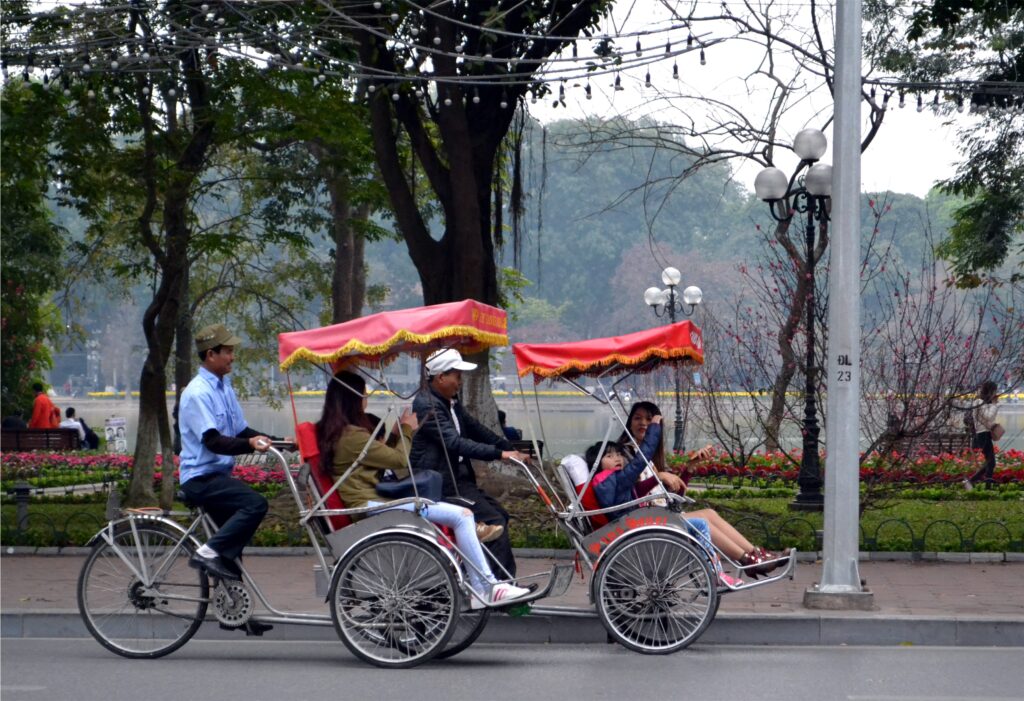
What impressed me most about Hanoi was the streets were cleaned. You don’t see throwing any garbage — even cigarette butts. In fact, you cannot see stalls selling cigarettes. What is being displayed are drinks (soft drinks and beers) and fruits.
You see people along the streets drinking after office hours. During lunchtime, you see them eating along with the corners of the streets and having fun. Drinking, it seems, is always a part of the meal.
Hanoi is the second-largest city (after Ho Chi Minh, known before as Saigon) in Vietnam. It has a fascinating blend of East and West, combining traditional Sino-Vietnamese motifs with French flair.
As in other parts of Vietnam, traffic in Hanoi is dominated by an incredible number of motorbikes, all of which seem to be making a mad, desperate dash for something just out of reach — all of the time.
“Hanoi is home to about 7 million people,” says Hung Nguyen, our tour guide. “And there are about 3 million motorbikes.” That’s the reason why wherever you go, you see motorbikes.
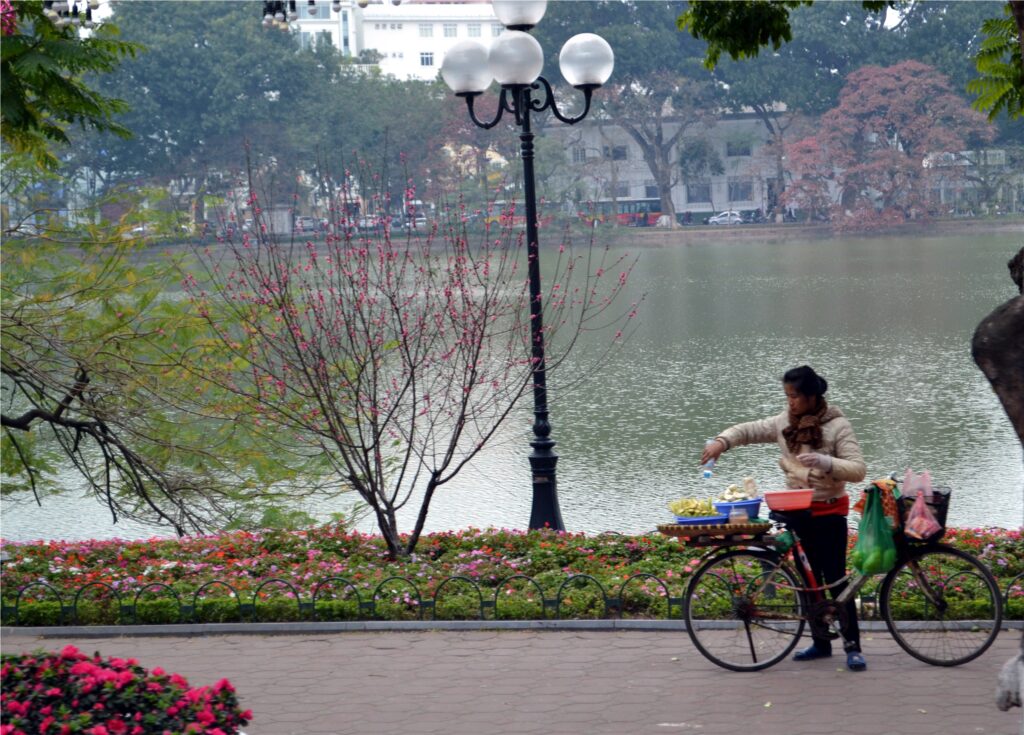
Hoan Kiem Lake 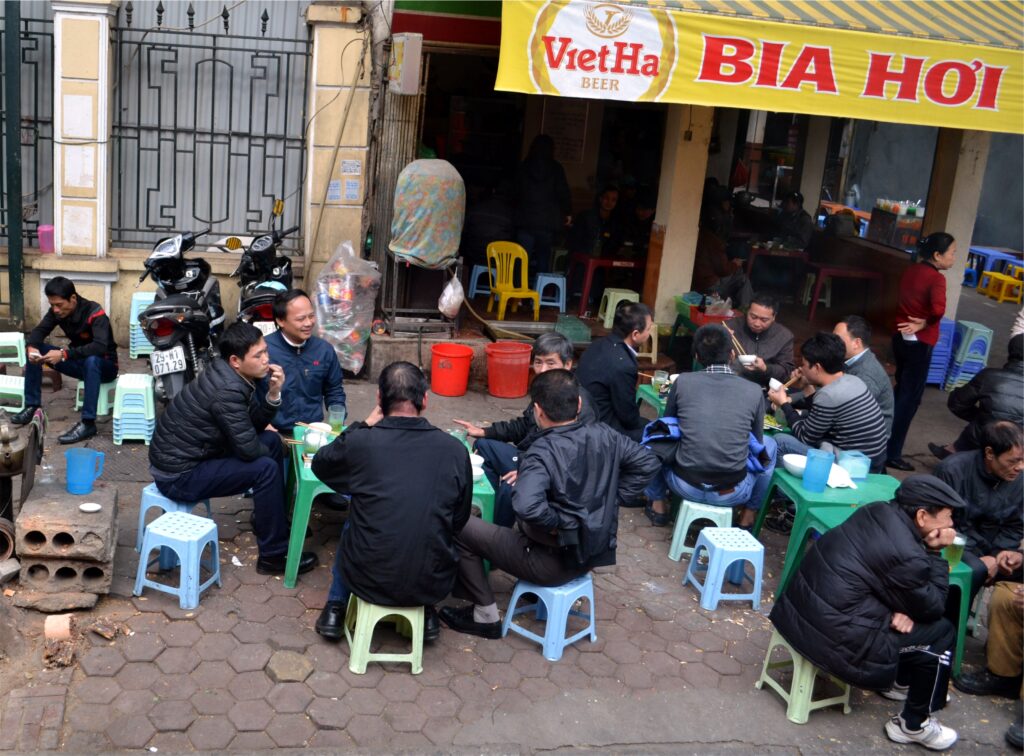
Eating time
To experience Hanoi, you need to visit the so-called 36 Streets area, with its low, narrow “tube houses” with “curved, red-tiled roofs which have long captured the imagination of Vietnamese artists and foreign visitors.” You get a good glimpse of the place by hiring a cyclo taxi. During the French colonial period, rickshaws were introduced, but they never became popular. And so cyclo, a three-wheel bicycle taxi, came into existence.
All-Asia Travel Guide has this interesting note: “The 36 streets are still named after the craftsmen — silversmiths, leather workers and so on — who first settled in the area centuries ago. The bustling Dong Xuan market, built by the French, is an adventure for a visitor interested in the wide variety of food and other products for sale.”
During our recent tour, we went to several tourist spots like the Hoa Lo Prison (known among American prisoners of war as “Hanoi Hilton), the Hoan Kiem Lake (on which you get a glimpse of the Turtle pagoda and visit Ngoc Son Temple), the Ba Dinh Square (and adjacent places of interest like Presidential Palace, Ho Chi Minh Mausoleum, Ho Chi Minh house-on-stilts, one-pillar pagoda), and the Temple of Literature.
But the most impressive area we visited was Ha Long Bay, about 164 kilometers away from Hanoi. It is located in the Gulf of Tonkin, within Quang Ninh Province, in the northeast of Vietnam. Covering an area of 43,400 hectares and including over 1,600 islands and islets, most of which are uninhabited and unaffected by humans, it forms a spectacular seascape of limestone pillars is an ideal model of a mature karst landscape developed during a warm and wet tropical climate. The property’s exceptional scenic beauty is complemented by its great biological interest.
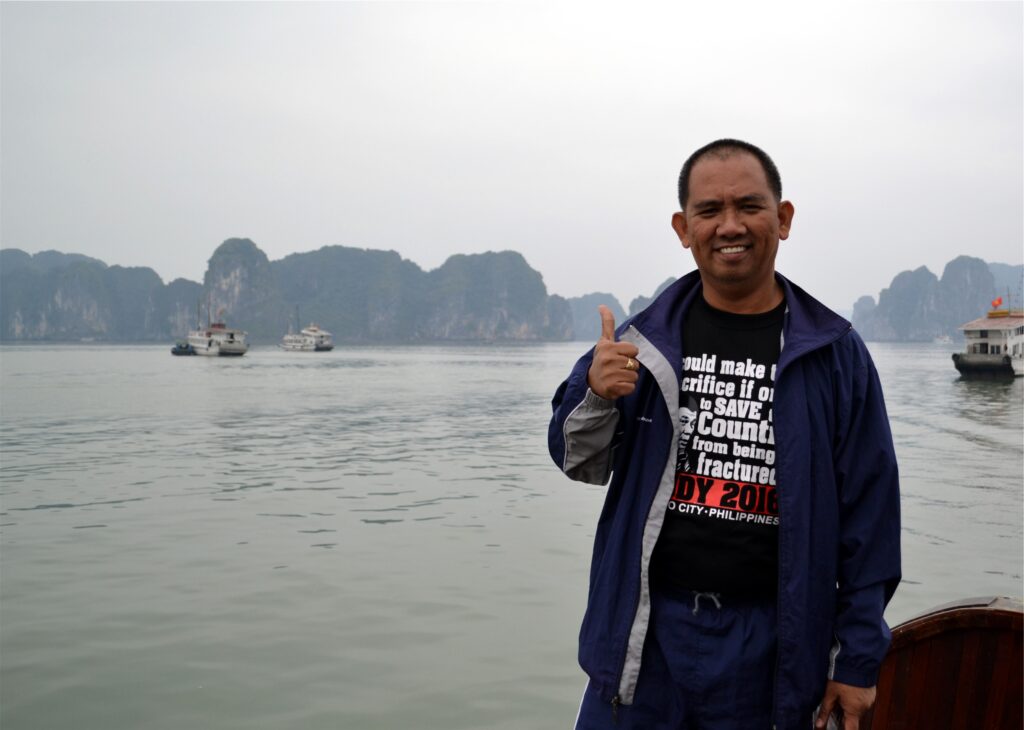
The author at Ha Long Bay 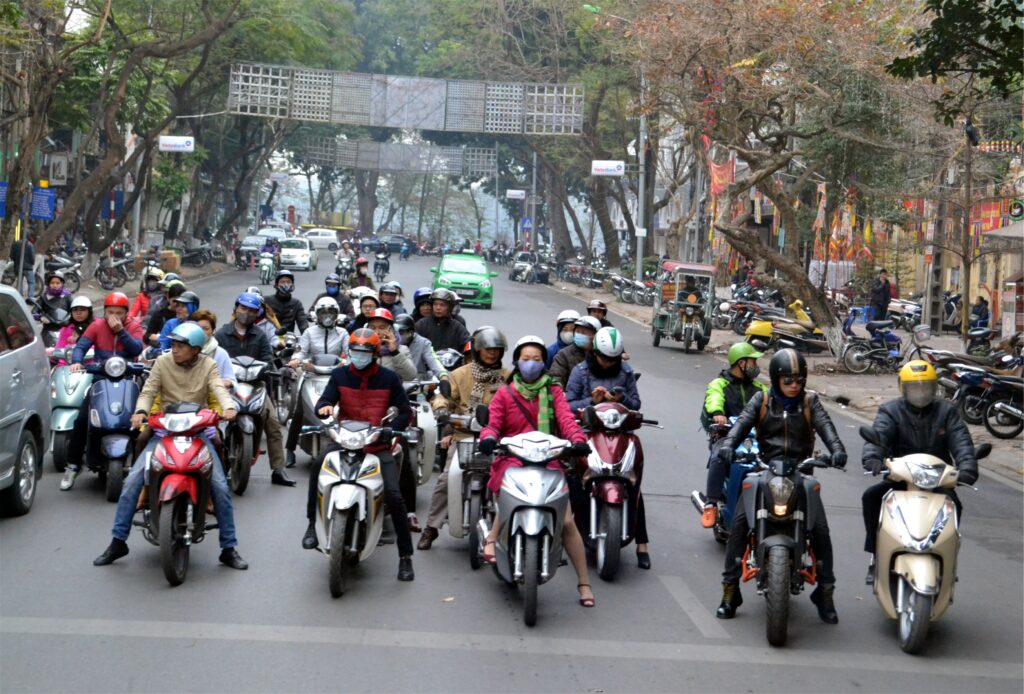
Motorcycles abound
The Lonely Planet wrote: “Towering limestone pillars and tiny islets topped by forest rise from the emerald waters of the Gulf of Tonkin. Ha Long translates as ‘where the dragon descends into the sea’ and legend tells that this mystical seascape was created when a great mountain dragon charged towards the coast, its flailing tail gouging out valleys and crevasses. As the creature plunged into the sea, the area filled with water leaving only the pinnacles visible. The geological explanation of karst erosion may be more prosaic, but doesn’t make this seascape any less poetic.”

